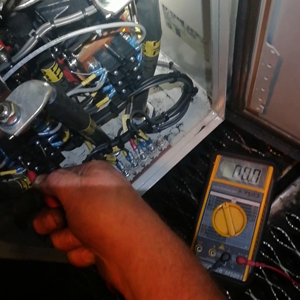- Reaction score
- 4,350
Re# 29: That could also explain the massive arcs you get on S2 when it pulls in. Where S1 doesn't.
I have just phoned the technical department at Albright who make S1 and S2. I was told the coils do not have any sensitivity to polarity - but I would still see if it made a difference.
I asked about the nature of the arcs if the polarity at the high current contacts was the wrong way round. The magnetic arc quench mechanism expels the arc away from the contacts when the polarity is correct. When incorrectly polarised, the arc is drawn inwards causing damage to the high current switch mechanisms.
AS you observed a difference in the intensity of the arcs, the brighter display of arc appears correct for S2 and possibly is dimmer on S1 because of incorrect contact polarity. So check by voltage measurement and markings on S1 and S2.
I have just phoned the technical department at Albright who make S1 and S2. I was told the coils do not have any sensitivity to polarity - but I would still see if it made a difference.
I asked about the nature of the arcs if the polarity at the high current contacts was the wrong way round. The magnetic arc quench mechanism expels the arc away from the contacts when the polarity is correct. When incorrectly polarised, the arc is drawn inwards causing damage to the high current switch mechanisms.
AS you observed a difference in the intensity of the arcs, the brighter display of arc appears correct for S2 and possibly is dimmer on S1 because of incorrect contact polarity. So check by voltage measurement and markings on S1 and S2.










